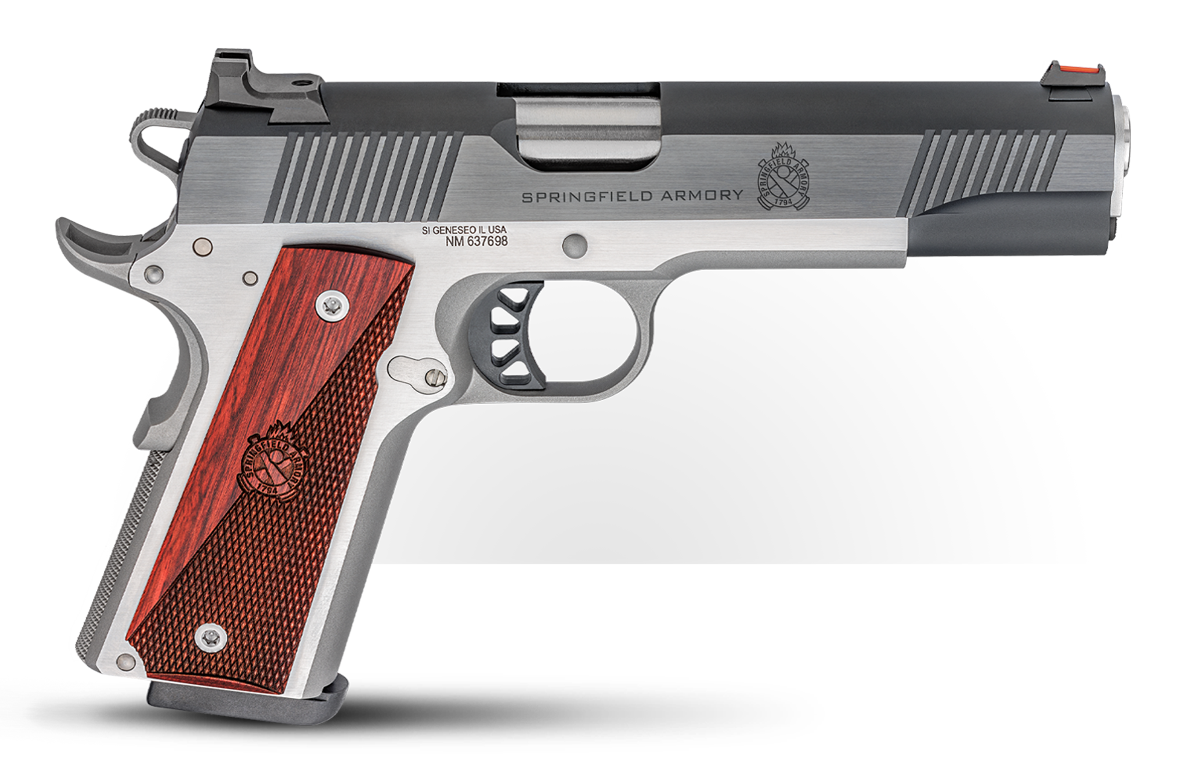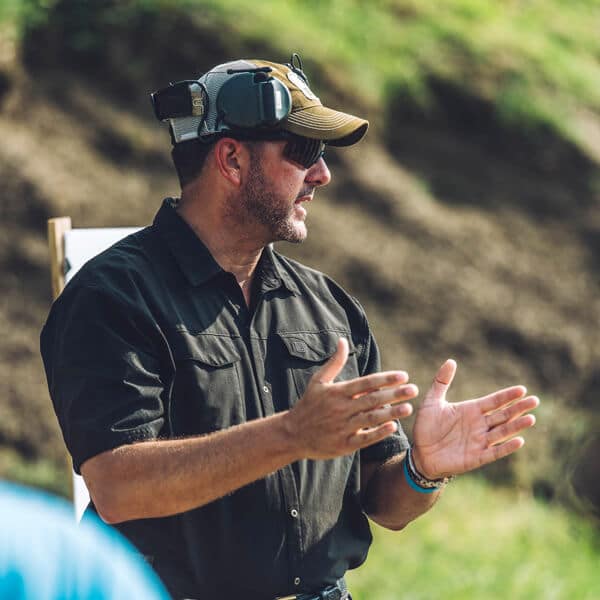There’s a patch of shade under a stand of trees on the land where I shoot that is 70 yards from my plate rack and steel targets. During the sweltering summer months, the shade tends to heavily influence where my shooting occurs — unless a particular drill calls for a specific distance.
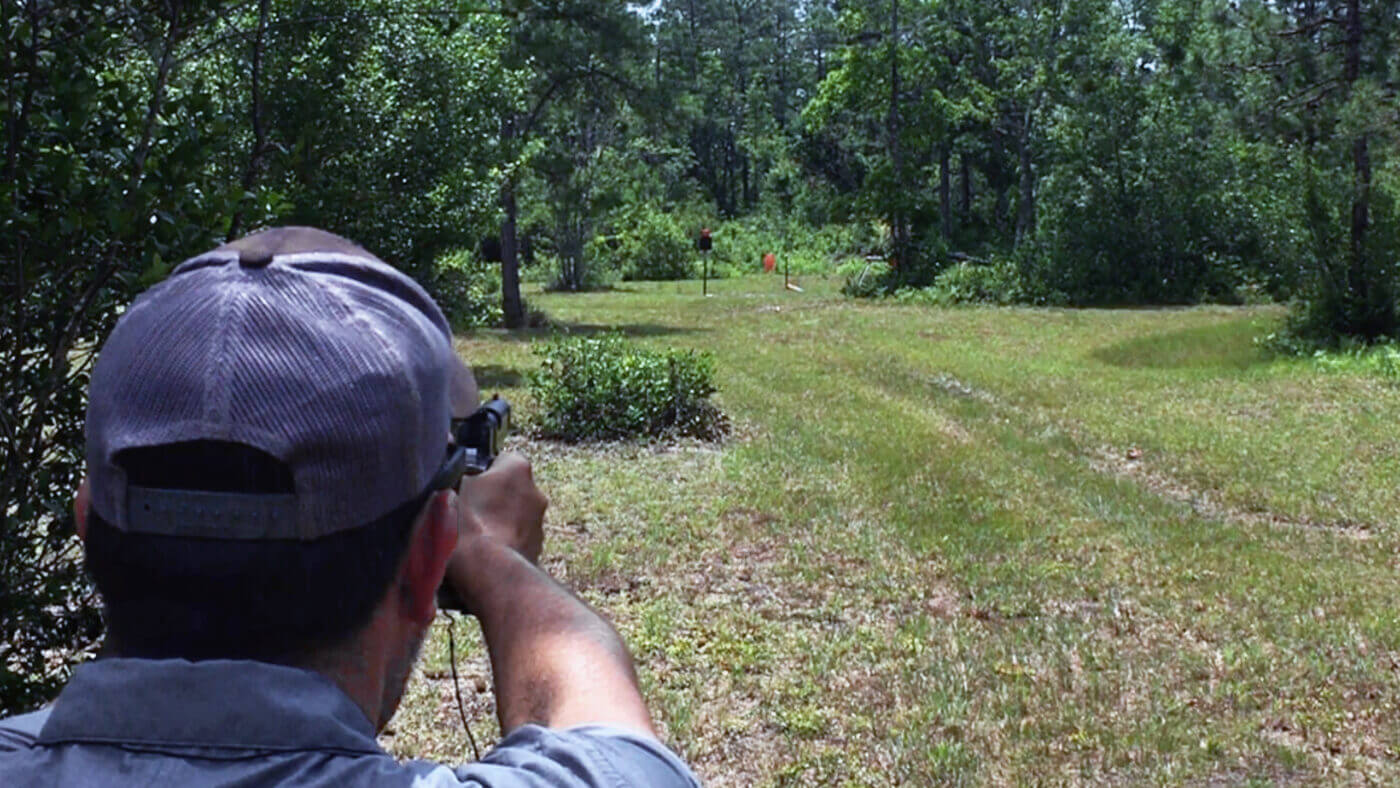
A couple of years back, I was working with a few particularly accurate pistols and realized that ringing the steel way back at 70 was more achievable than one might suspect — and a worthy and rewarding challenge.
There is no doubt that the first time you lock onto the front sight from 70, that the yardage seems to rapidly grow and that little 8” MGM steel plate I have out there looks like it’s in the next county. However, once you feel the pistol recoil and the “ding!” wanders back up-range to your eagerly waiting ears, the reward is immediate.
Three Factors for Hitting
As it turns out, aside from just where the good shade happens to be, there are a couple of factors that make 70 yards a good fit for long-range accuracy work. At about 70 yards there is a convergence of several important handgunning factors.
The first is trajectory. Many 9mm and .45 ACP loads sighted at the common “six o’clock” hold for 25 yards are still rising at 50 but have fallen to nearly “smack on” at about 70 yards. This allows for a good, repeatable hold. Those guns which are sighted center hold at 25 yards typically allow the shooter to hold at the top of the steel plate, with common loads having dropped just the few inches to catch the center of an 8″ plate.
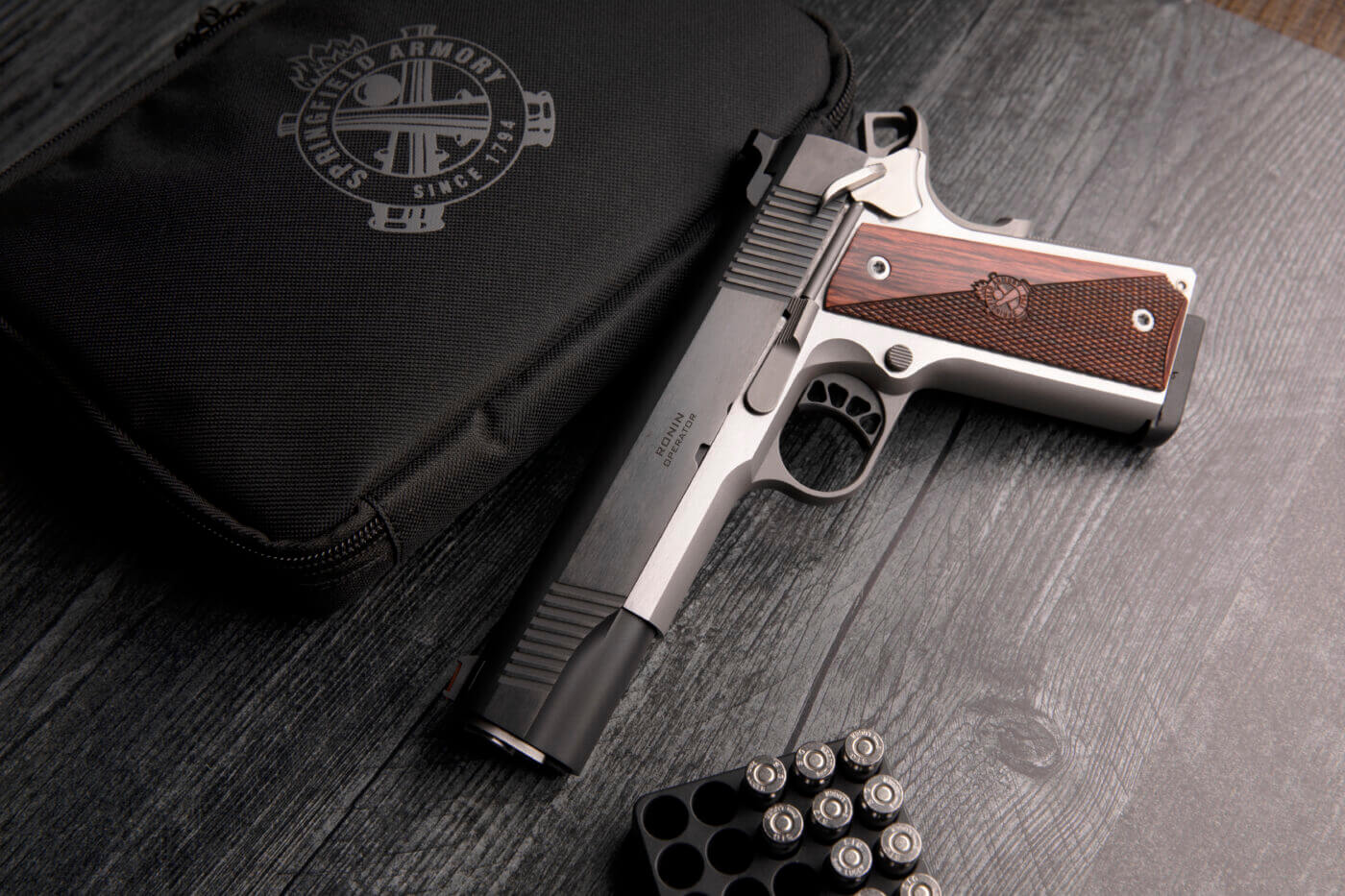
The next factor is visual acuity. For many shooters, 70 yards is about the limit of where they can get a hard focus on the front sight and still make out the tiny steel plate behind it. Even at 70 yards the quality of the available light, contrast of the target and background, and clarity of the eye protection matter greatly. There are times when the light is too harsh and I just can’t connect at 70 without stepping up to a larger target.
The third factor is the accuracy of the pistol itself. A service pistol with the nominal 2.5″ accuracy at 25 yards is stress-testing the edge of the plate at 70 yards, but still allows regular hits if the shooter knows the exact point of aim and holds up his end of the deal. However, pistols showing match-grade accuracy are fully capable of putting every shot onto the plate and on a good day will overlap splatters into a 4″ to 5″ group. So, with a great pistol and proven loads, it’s theoretically possible to hit the plate every time at 70 yards.
The New Contender
When the Springfield Armory Ronin .45 came in for evaluation, I did not initially consider it for the 70-yard test. However, I soon discovered the pistol shot beyond crazy well with both Wilson Combat match loads and one of my go-to accuracy handloads with a 230-gr. Hornady HAP over 5.3 grains of HP 38. The average of the two loads across many groups was a head turning 1.13″ — well into custom and match gun territory, and beyond reasonable expectations for a factory 1911 with an MSRP of $849.
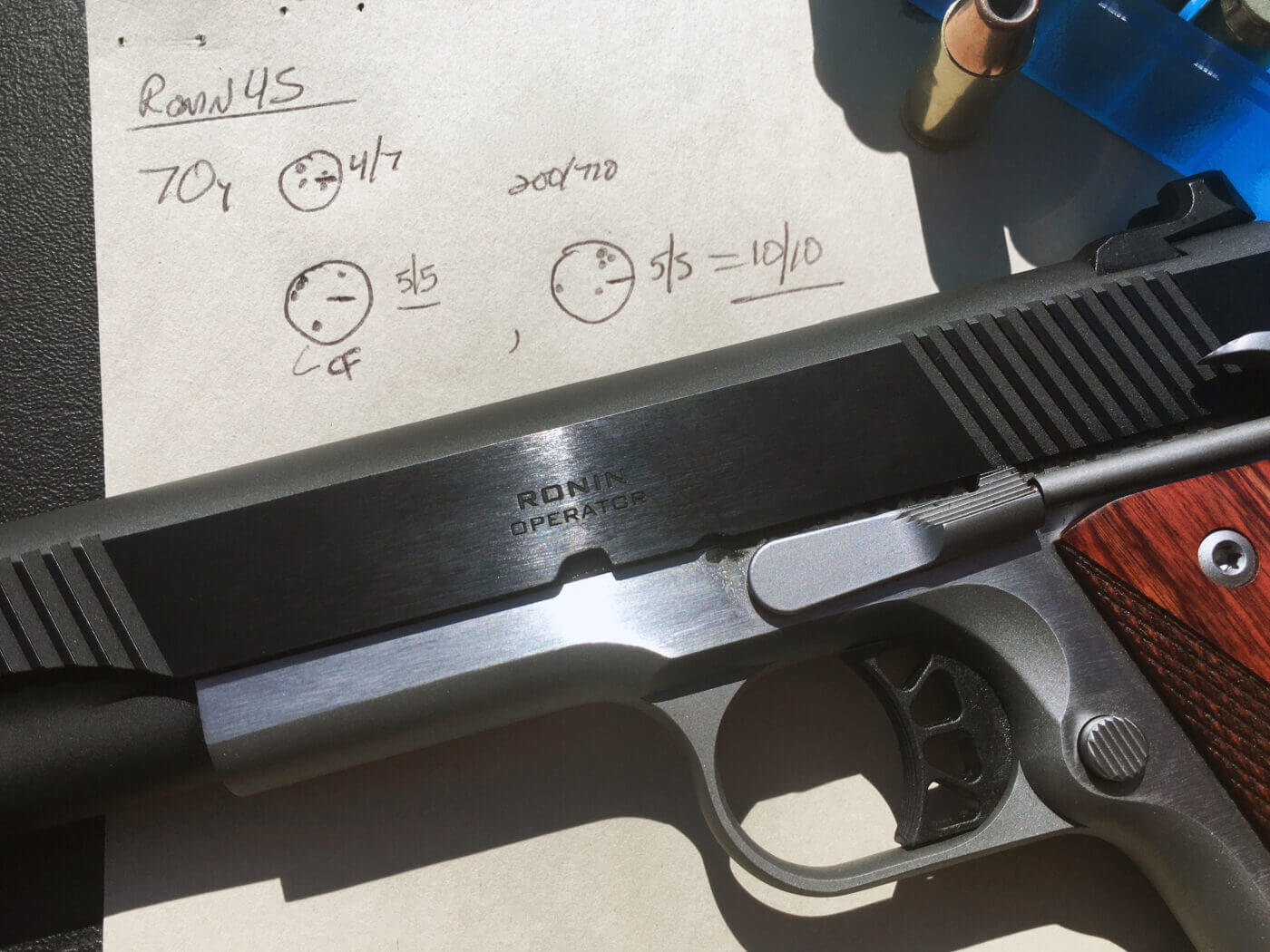
With that kind of accuracy underneath that Ronin’s excellent trigger, it was a given that I was taking the pistol back to the shade for a go at the plates. The Ronin was immediately ringing steel at 70 yards. On a picture-perfect spring day with fluffy clouds overhead and wildflowers fluttering gently along the ground, I looked over the 1911 at the steel plate.
The plate was in sharp contrast and I brought the pistol up to settle into a hold; my natural point of aim was perfectly still right where it needed to be and the trigger felt extra crisp under my pressure. Five hits came easily, then three more. The final two shots gave me about 50,000 psi of self-induced pressure, but I called both “good” as the pistol rocked back and cycled and both gonged their arrival onto the plate. It felt great to be alive and I had a one-man celebration of Springfield’s craftsmen and John Browning’s genius.
Upping the Ante
About two weeks later I was back in the 70-yard shady spot enjoying another beautiful range day with the Ronin .45. Downrange, the plates needed a fresh coat of paint, but a Wilson Scoreable Steel reduced silhouette was painted and in sharp contrast. I had just loaded up some of the 230-gr. HAPs and tried a few shots to get a sense of where the handloads would impact at that distance.
Two of the slugs rang the silhouette but had that sharper, less resonant tone that suggested a hit in the 6×6″ head box. I walked to the target and was encouraged to see two splatters centered in the head box. Now circumstance had firmly thrown down the gauntlet; the gun was accurate enough to theoretically hit within that distressingly small target head, and I now knew exactly where to hold.
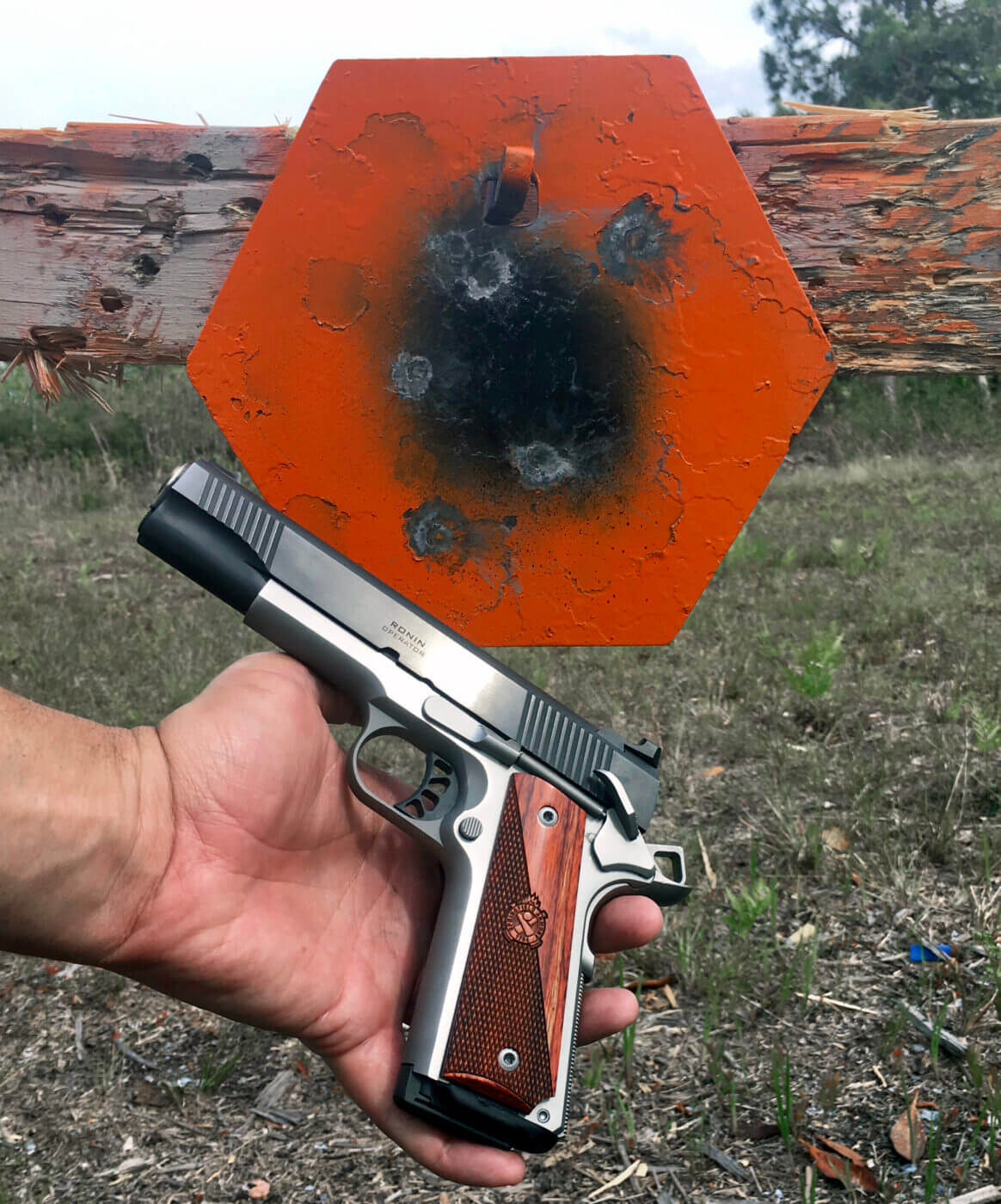
I filled the magazine with eight rounds and strode up-range. A hit on an 8″ plate is hard at 70 yards; dropping the inches of steel on each side to a 6″ square ups the difficulty by what a mathematician would describe as … a lot.
The light was even and sharp. I checked my natural point of aim and made a series of fine adjustments until the front sight hung perfectly where I wanted it. Four and a half pounds of steady pressure, and the Ronin rocked gently back as it launched a round. I saw the sight lift from exactly the spot I intended as the steel reported a hit. Another hit followed and then two more. I was as tightly focused as I have ever been on just sights and trigger, but at four hits a sense of wonder began to seep in along with a no doubt greedy thought that I could go eight straight hits. This momentary lapse of focus jinxed shot number five and I forced the shot, causing it to whistle just off the right side.
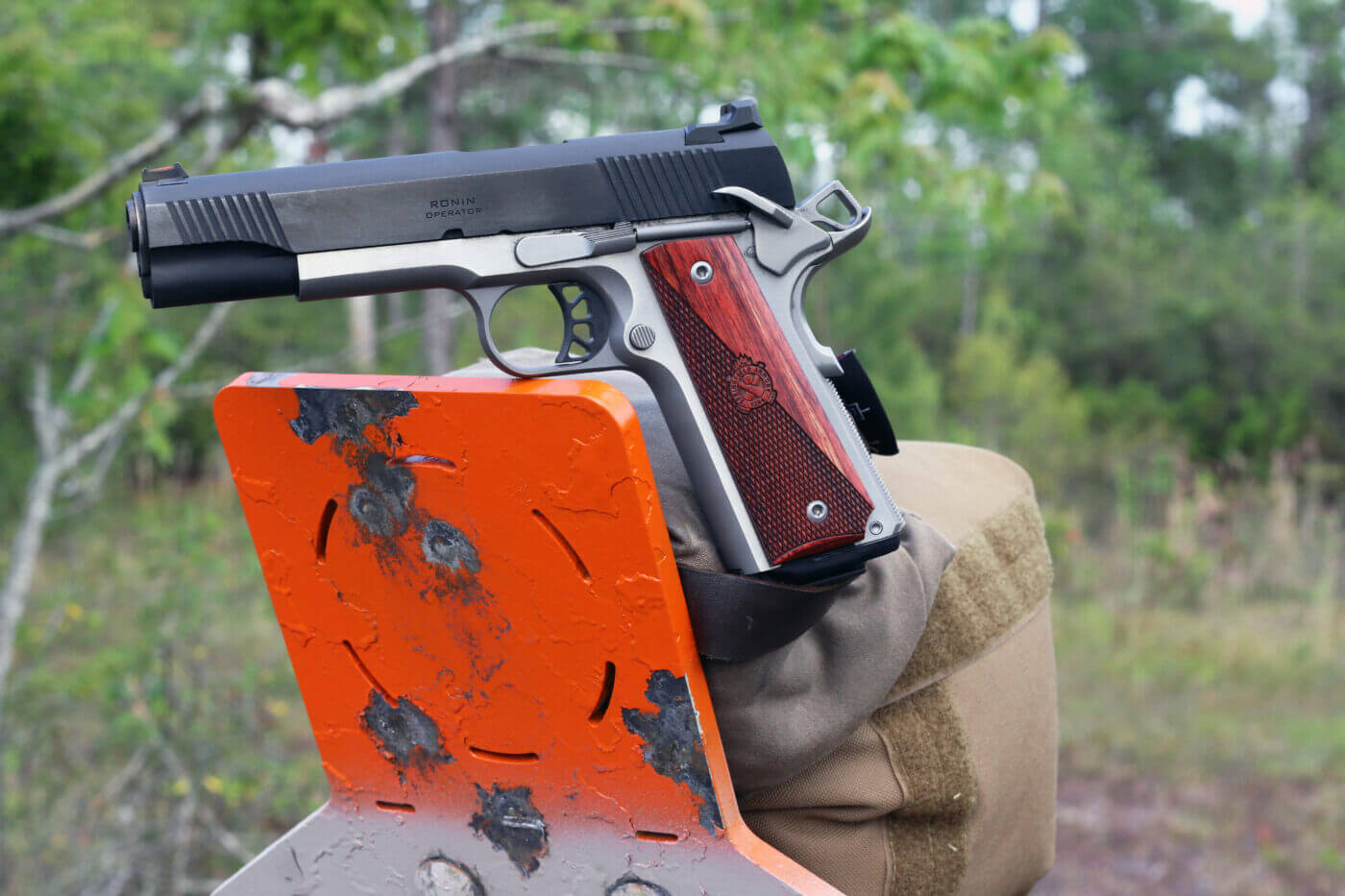
I focused again on the mechanics of the shot rather than my desired result and the Ronin did its job, putting two more in the head. I called the last shot as a “maybe” as the sight picture drifted a touch high. As I holstered the 1911, I shifted from focus on the task to realization of the accomplishment; six headshots at what my Leupold rangefinder lasered at 70 yards. I took a break to soak it in and capture the target with my camera.
Back to the Range
As summer cranked off, I had decided to share the story of what this particular Ronin had accomplished. However, I realized that in 2020 just saying something happened without videographic evidence is a tough ask for many folks who distrust what they read as a rule. I don’t blame them. Check out my video at the top of the page for proof.
I took a tripod out to the range and set up to recreate some headshots. My normal “lane” from shade to target didn’t have room for me to shoot and get the camera in a good spot, so I had to adjust to a more visible 70-yard stretch where I was barely in some mixed shade and had to move quickly to not lose that.
This time it was hot, the light harsh and gnats were tickling as they landed on and explored my outstretched arms. Not the ideal shooting set-up, but I took it as cheerfully as possible as a good challenge. The video shows the rest, but I was relieved to drop three hits onto the steel head out of four shots for posterity.
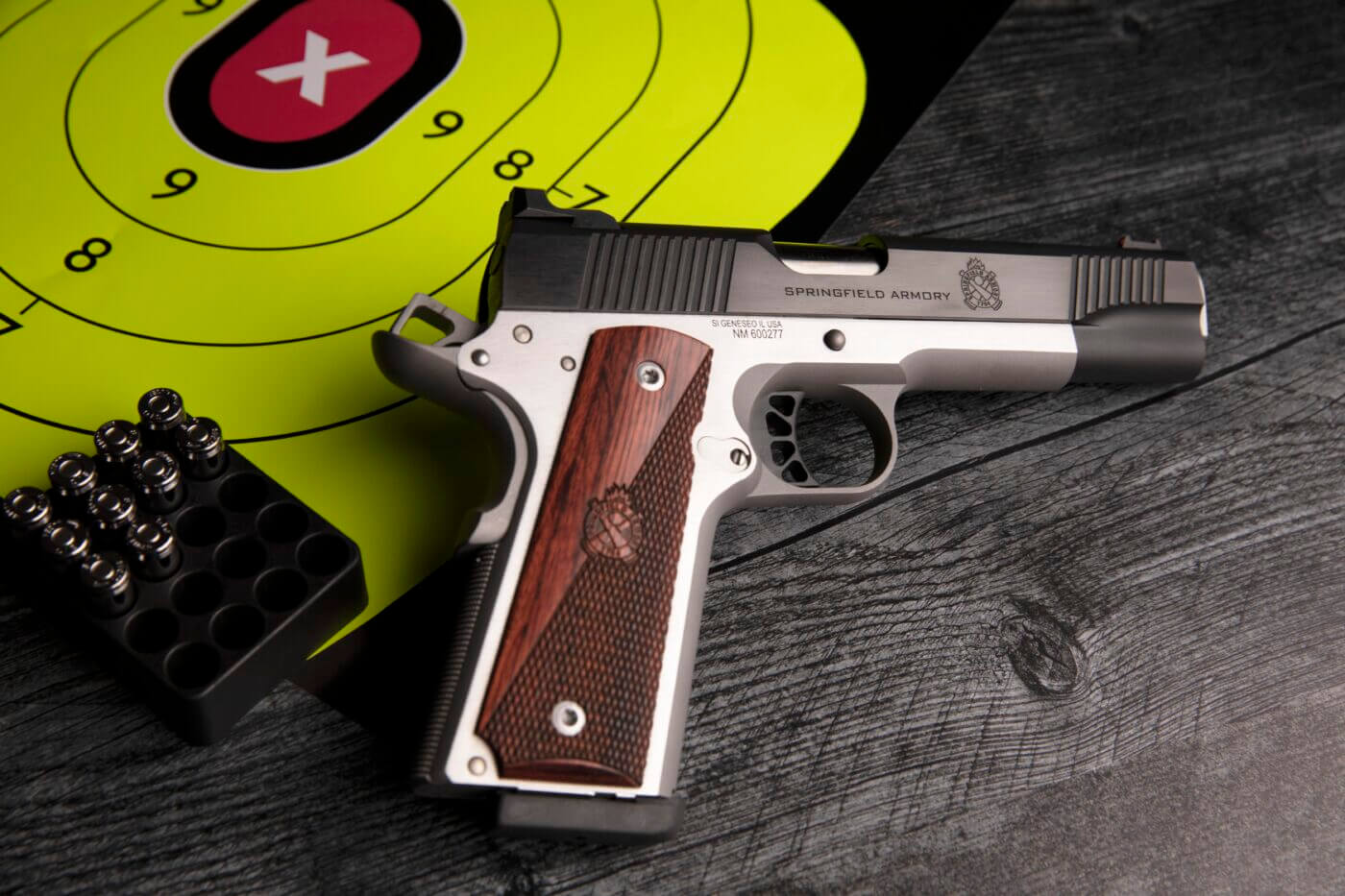
Conclusion
Realistically no one “needs” to practice at 70 yards regardless of how much I personally enjoy it. However, the time I’ve put in standing in the shade at 70 has made a tangible difference in my confidence and mental approach when lining up on harder targets at 25 to 50 yards.
In some units I was in, a headshot at 25 yards was considered the outside edge of expectations — and that is well-grounded. But it sure feels good to know that a pistol like this Ronin can take a shot like this — if you do your part. And all for an MSRP of just $849.
Editor’s Note: Please be sure to check out The Armory Life Forum, where you can comment about our daily articles, as well as just talk guns and gear. Click the “Go To Forum Thread” link below to jump in and discuss this article and much more!
Join the Discussion
Featured in this video
Continue Reading
Did you enjoy this video?

 144
144




